Cloud Infrastructure Entitlement Management (CIEM) software is designed to help organizations manage and secure their cloud environments by controlling and monitoring permissions and entitlements across cloud services.

If you’re asking about what CIEM software generally does not include or address, here are a few aspects:
- Traditional On-Premises Management: CIEM tools focus on cloud environments and do not typically handle on-premises infrastructure management or traditional network security.
- Application-Specific Security: CIEM solutions are more focused on entitlement management rather than application-level security concerns, such as code vulnerabilities or application-specific threats.
- Comprehensive Cloud Cost Management: While CIEM may have some features related to cost management, it does not usually provide the full range of financial optimization tools found in dedicated cloud cost management platforms.
- Full Network Security: CIEM software does not generally cover broader network security aspects like firewalls, intrusion detection systems, or VPNs.
- Incident Response: CIEM tools are focused on entitlement and access management rather than providing comprehensive incident response or forensics capabilities.
- End-User Training: CIEM solutions typically do not include training for end-users on security best practices or cloud resource usage.
- Compliance Reporting: While CIEM tools help with access control and entitlements, they may not provide exhaustive compliance reporting or governance features that are part of dedicated compliance management solutions.
CIEM software is specialized for managing and securing cloud entitlements, but it does not cover all aspects of cloud or overall IT security management.
Paloaltonetworks
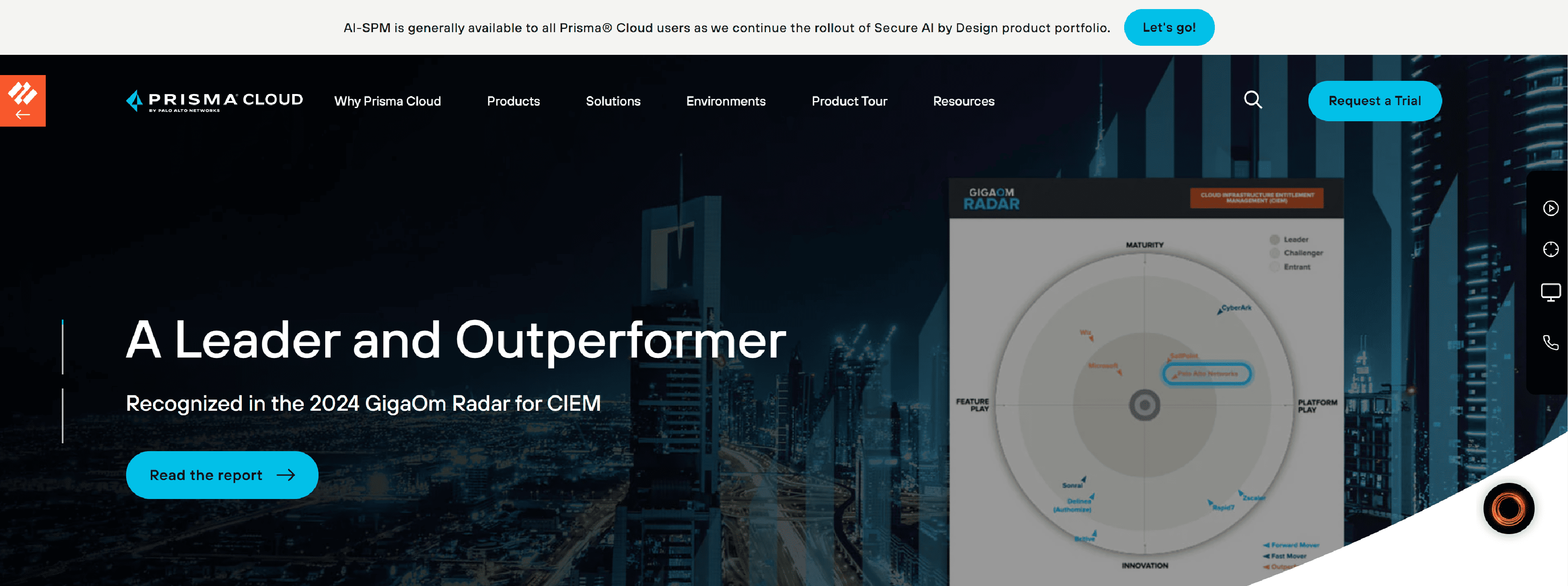
Prisma Cloud is the most complete Cloud Native Application Protection Platform (CNAPP) for code to cloud security in any cloud, multicloud, and hybrid environment.
- Query permissions across users, compute instances, cloud resources and more
- Monitor excessive and unused privileges
- Automate remediation of overly permissive roles
Cyberark
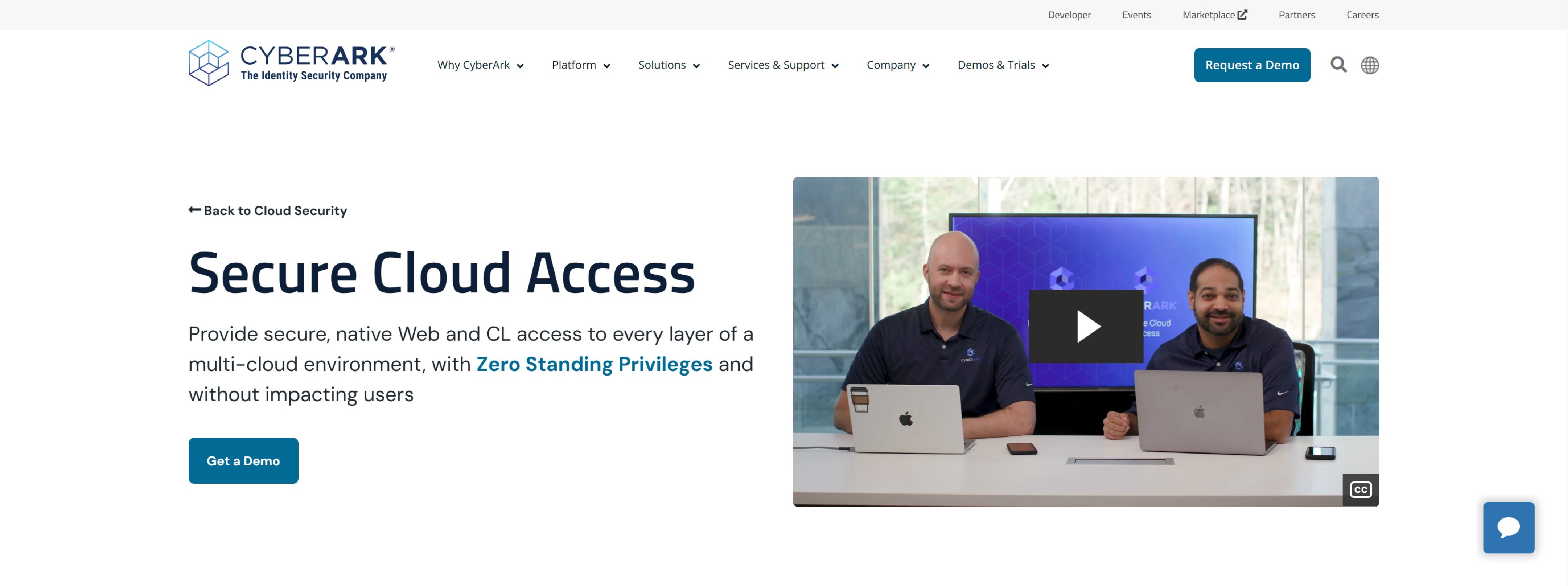
Cyberark – provide secure, native Web and CL access to every layer of a multi-cloud environment, with Zero Standing Privileges and without impacting users.
- Zero Standing Privileges
- Define Access Policies Globally
- Native Access to Cloud
- Dynamic Break-Glass Access
- Seamless integration
Fortinet
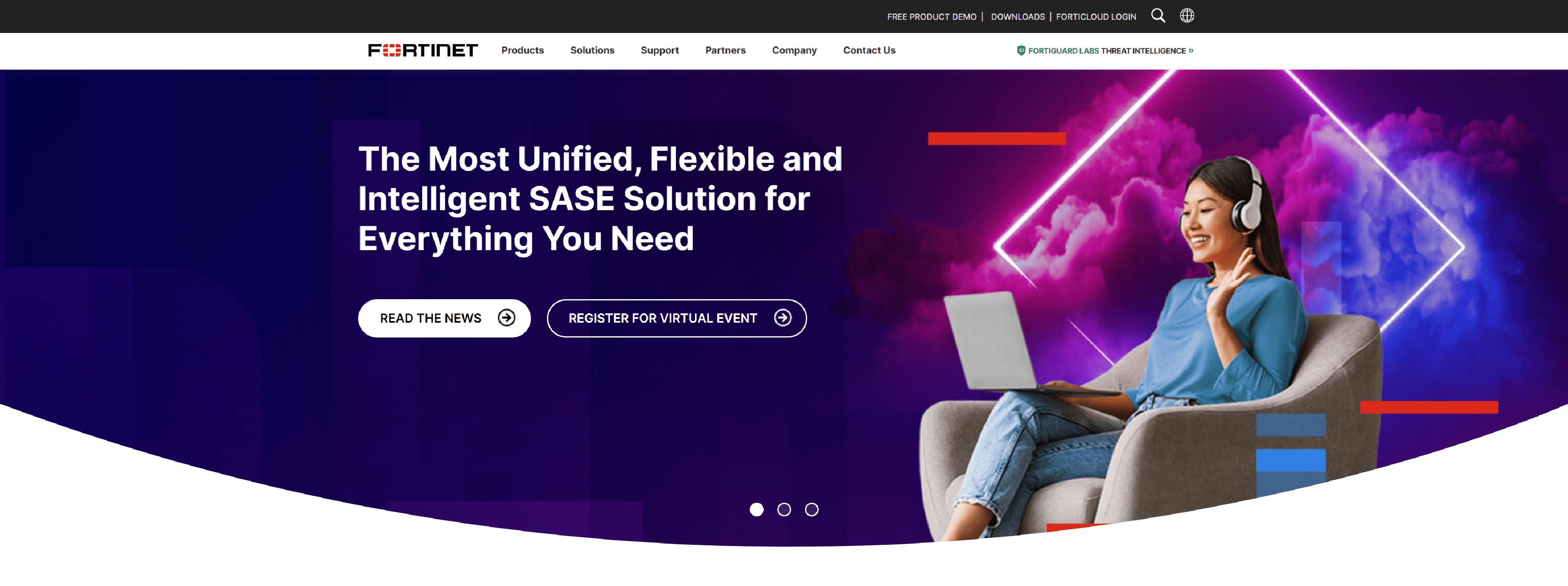
Fortinet Security Fabric delivers a rich set of application security solutions for protecting critical business applications.
- Applications Can Live Anywhere
- Edge Compute
- Deployment Complexity
- Forced Acceleration
- Cloud Threats
Wiz

Wiz analyzes cloud entitlements and auto-generates least privilege policies across your cloud, to detect, prioritize, and remediate IAM risks.
- Understand effective permissions
- Detect identity risks
- Govern access with CIEM Explorer
- Monitor for exposed secrets and lateral movement
- Secure non-human identities
- Identity threat detection and response
Sailpoint
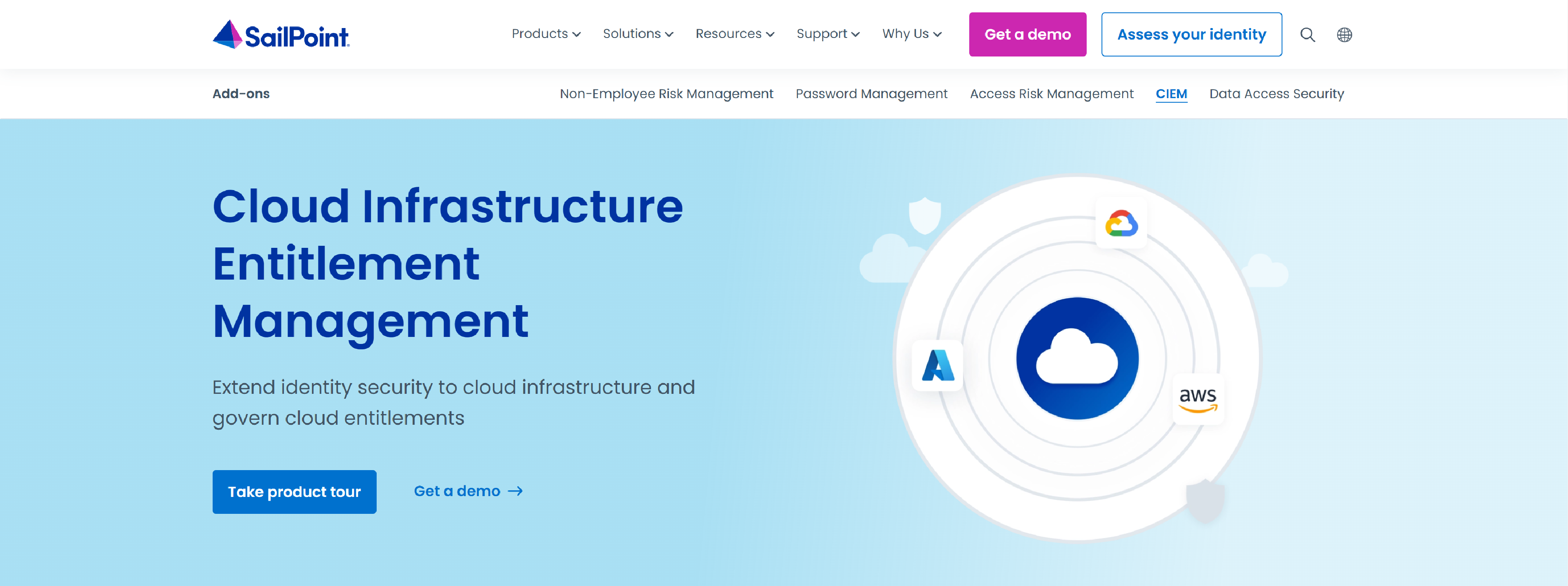
Sailpoint – govern and manage multi-cloud infrastructure with a single approach; apply clear policies and automate the lifecycle management of IaaS access.
- Get a graphical view of identity to cloud resources from their entitlements across all IaaS environments
- Use lifecycle management to ensure cloud access is achieved and removed appropriately
- Create cloud certification campaigns and generate reports to support compliance reporting
Bitdefender
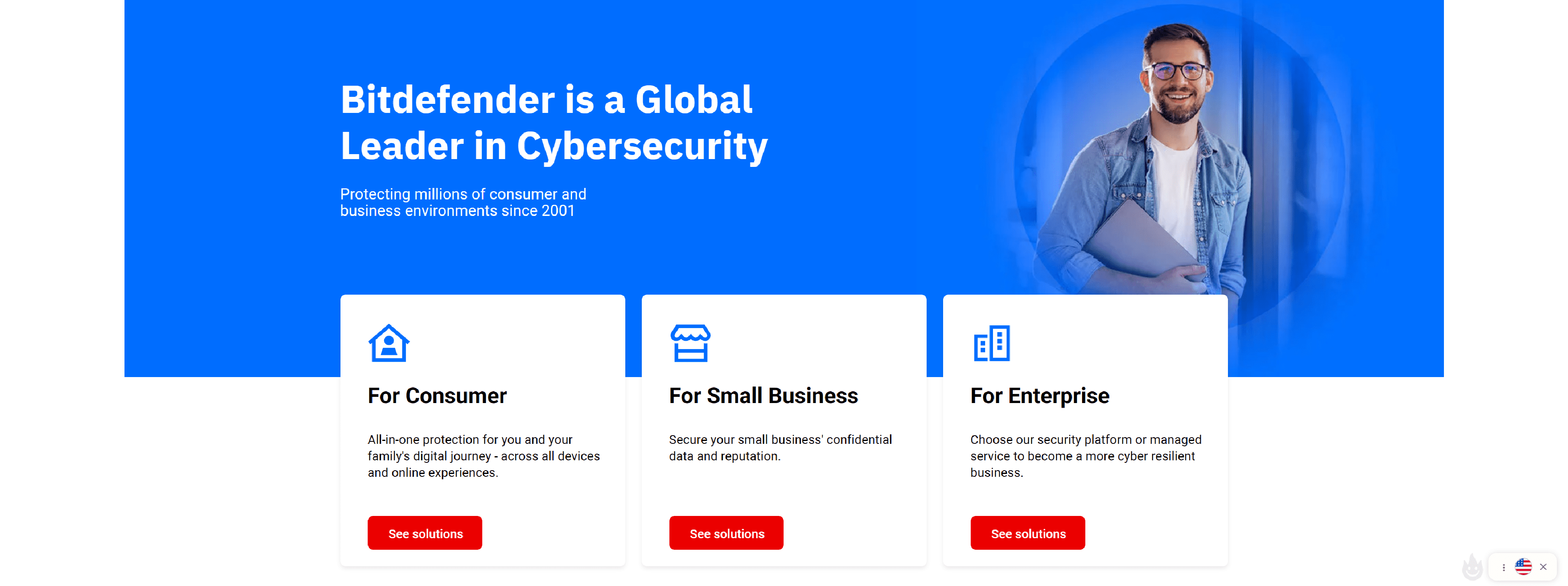
Bitdefender – go beyond regular Cloud Security Posture Management tools by adding CIEM and Threat Detection capabilities to your cloud security with GravityZone CSPM+.
- Visibility Into Your Cloud Footprint
- Uncover Risky Identities
- Accelerate Compliance
- Cloud Detection and Response
- Resolve Misconfigurations
Axiom
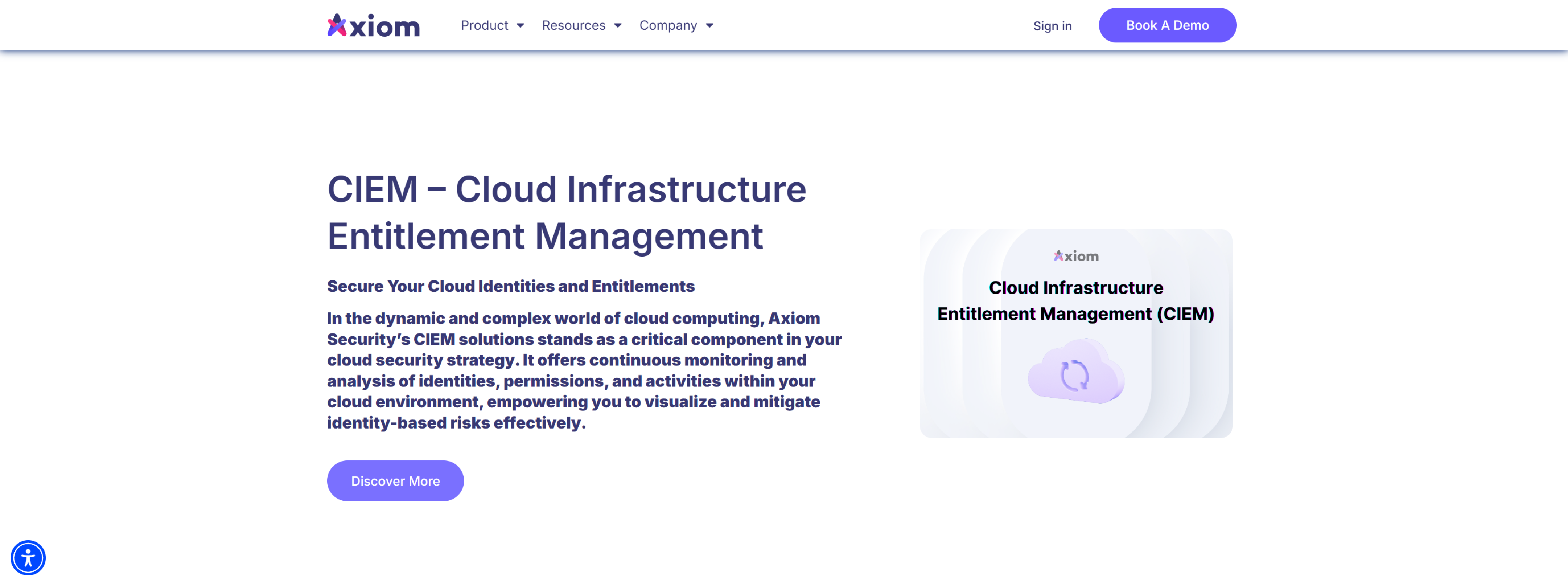
Addressing the Challenges of IAM Visibility The challenges in cloud security predominantly stem from inadequate visibility into identities, permissions, and resources. Axiom CIEM platform addresses this by automating the detection, analysis, and mitigation of access risks in cloud infrastructure.
- Multi-Cloud Asset Management
- Quick Remediation
- Policy Enforcement and Least Privilege
- Anomaly Detection
- Compliance Assurance
What to Look For in a CIEM Software
When evaluating Cloud Infrastructure Entitlement Management (CIEM) software, it’s important to consider a range of features and capabilities to ensure it meets your organization’s needs effectively.
Fit for Your Cloud Environment
Ensure the CIEM software seamlessly integrates with the cloud platforms you use. It should support major providers like AWS, Azure, and Google Cloud, as well as any niche or hybrid environments you might have. Think about how well it will mesh with your current cloud architecture and whether it can handle the complexities of your specific setup.
Granular and Flexible Access Controls
Consider how the software allows you to manage permissions. It should offer fine-grained control over who can access what, how, and when. Look for flexibility in defining roles and policies that reflect your organization’s structure and security requirements. This flexibility helps enforce the principle of least privilege, ensuring users and services have just the right level of access.
Visibility and Monitoring
You’ll want robust visibility into who has access to what. The software should provide clear, actionable insights into permissions and access patterns. Look for features like dashboards and audit trails that help you track changes and detect anomalies. This visibility is crucial for understanding your access landscape and spotting potential issues before they become problems.
Automation and Efficiency
Efficiency is key. The CIEM software should automate routine tasks like provisioning and de-provisioning access based on predefined rules or role changes. This reduces manual errors and frees up time for your team.
Compliance and Reporting
Compliance with regulations and standards is often a major concern. The software should help you meet these requirements by providing tools for generating reports and maintaining audit trails. Look for features that allow you to create detailed, customizable reports to demonstrate compliance during audits and reviews.
Integration and Usability
Consider how easily the software integrates with other tools and systems in your tech stack, such as IAM systems or SIEM platforms. The user experience should be intuitive, with straightforward interfaces and workflows. The goal is to make it easy for your team to manage entitlements without needing extensive training or support.
Scalability and Performance
Think about your organization’s growth and how the CIEM software will scale with it. It should handle increasing numbers of users, roles, and permissions without performance degradation. Ensure it has the capacity to grow alongside your cloud infrastructure.
Security Features
Since security is paramount, the software should include strong security measures. Look for features like data encryption, support for multi-factor authentication, and other mechanisms that protect sensitive information and access controls.
Vendor Support and Documentation
Assess the vendor’s support capabilities and the quality of their documentation. You’ll want reliable support to address any issues that arise and comprehensive documentation to guide you through deployment, configuration, and troubleshooting.
By focusing on these considerations, you’ll be better equipped to choose CIEM software that enhances your cloud security and operational efficiency, tailored to your organization’s unique needs.
Most Common Questions Regarding Cloud Infrastructure Entitlement Management (CIEM) Software
Q: What is Cloud Infrastructure Entitlement Management (CIEM) Software?
A: CIEM software is designed to manage and control user and service access to cloud resources. It focuses on ensuring that individuals and applications have the right permissions while minimizing security risks. The goal is to enforce policies like the principle of least privilege, providing detailed visibility into access and automating entitlement management processes.
Q: Why is CIEM important for cloud environments?
A: CIEM is crucial because cloud environments are often complex and dynamic, with many users and services requiring varying levels of access. Proper entitlement management helps prevent security breaches, reduces the risk of unauthorized access, and ensures compliance with regulations. It streamlines the management of permissions, which can be challenging to handle manually in large or rapidly changing environments.
Q: How does CIEM software help with compliance?
A: CIEM software aids compliance by providing tools to enforce access policies and maintain audit trails. It generates reports that demonstrate adherence to regulatory requirements and helps ensure that permissions align with compliance standards like GDPR, HIPAA, or PCI-DSS. Regular audits and visibility into access controls are key features that support compliance efforts.
Q: What should I look for when evaluating CIEM software?
A: When evaluating CIEM software, consider factors such as integration capabilities with your existing cloud platforms, the ability to manage fine-grained permissions, and the strength of its monitoring and reporting features. It should offer automation for provisioning and de-provisioning access, support compliance requirements, and provide an intuitive user experience. Additionally, evaluate the software’s scalability, performance, and the quality of vendor support and documentation.
Q: Can CIEM software integrate with other security tools?
A: Yes, most CIEM software is designed to integrate with other security tools like identity and access management (IAM) systems, security information and event management (SIEM) platforms, and more. This integration helps create a comprehensive security posture by combining access management with other security controls and monitoring systems.
Q: How does CIEM software manage access across different cloud platforms?
A: CIEM software typically supports multiple cloud platforms such as AWS, Azure, and Google Cloud. It manages access by providing a unified view of permissions across these platforms, allowing for consistent policy enforcement and monitoring. The software often includes connectors or integrations specific to each cloud provider to facilitate this management.
Q: What are some common challenges addressed by CIEM software?
A: Common challenges addressed by CIEM software include managing complex permissions and roles across diverse cloud environments, ensuring compliance with regulations, preventing unauthorized access, and maintaining visibility into who has access to what resources. It also helps with automating access management tasks to reduce administrative overhead and errors.
Q: How does CIEM software handle the principle of least privilege?
A: CIEM software enforces the principle of least privilege by ensuring that users and services have only the permissions necessary to perform their tasks. It provides tools to define, review, and adjust access permissions regularly, helping to prevent over-privileged accounts and reduce security risks.
Q: What role does automation play in CIEM software?
A: Automation is a key feature in CIEM software that streamlines the management of access permissions. It helps automate tasks such as provisioning and de-provisioning user access based on predefined policies or role changes. This reduces manual intervention, minimizes errors, and ensures that permissions are updated consistently and promptly.
Q: How does CIEM software contribute to operational efficiency?
A: CIEM software enhances operational efficiency by simplifying the management of access controls, automating routine tasks, and providing clear visibility into permissions and access patterns. This allows IT and security teams to focus on more strategic tasks, reduces the risk of human error, and ensures that access management is handled in a streamlined and efficient manner.
Q: What kind of support and documentation should I expect from CIEM software vendors?
A: CIEM software vendors should provide comprehensive documentation, including guides for deployment, configuration, and troubleshooting. Additionally, expect robust support options, such as responsive customer service, technical support, and possibly community forums or knowledge bases. Good vendor support is essential for addressing issues quickly and ensuring successful implementation and operation of the software.
These answers provide a broad overview of what to consider and expect from CIEM software, addressing common concerns and providing insights into its role and benefits.